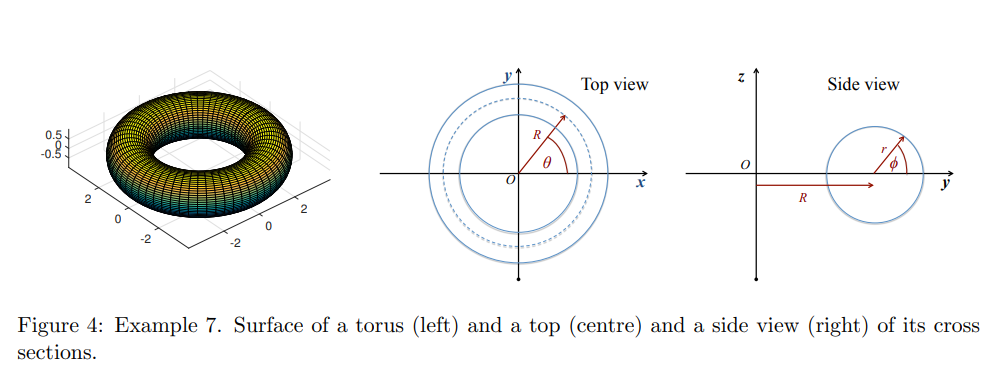PX153 - H3 - gradients of functions of three variables
represents contours as planes of constant value - gradient vector:
- perpendicular to the planes of constant value
- this gives us a convenient way of finding a vector perpendicular to a surface:
-
eg:
- surfaces of constant value are spheres
- sphere of radius
centred on
- in spherical polar coordinates
-
eg: find the vector normal to the surface of a torus

major radius, minor radius
toroidal angle ( ), poloidal angle ( )
need to eliminate:
-
describes the surface of the torus i cartesian coordinates
-
now, find the normal to vector from
:
$$ \frac{\partial f}{\partial x} = 2(\sqrt{x^{2}+ x^{2}}- R^{2}) \frac{x}{\sqrt{x^{2}+y^{2}}}$$
$$ \frac{\partial f}{\partial x} = 2(\sqrt{x^{2}+ y^{2}}- R^{2}) \frac{y}{\sqrt{x^{2}+y^{2}}}$$
$$ \frac{\partial f}{\partial z} = 2z$$
$$\vec\nabla f = 2x \frac{(\sqrt{x^{2}+ x^{2}}- R^{2})}{\sqrt{x^{2}+y^{2}}} \hat{\vec i} + 2y \frac{(\sqrt{x^{2}+ x^{2}}- R^{2})}{\sqrt{x^{2}+y^{2}}} \hat{\vec k} + 2z \hat{\vec k}$$